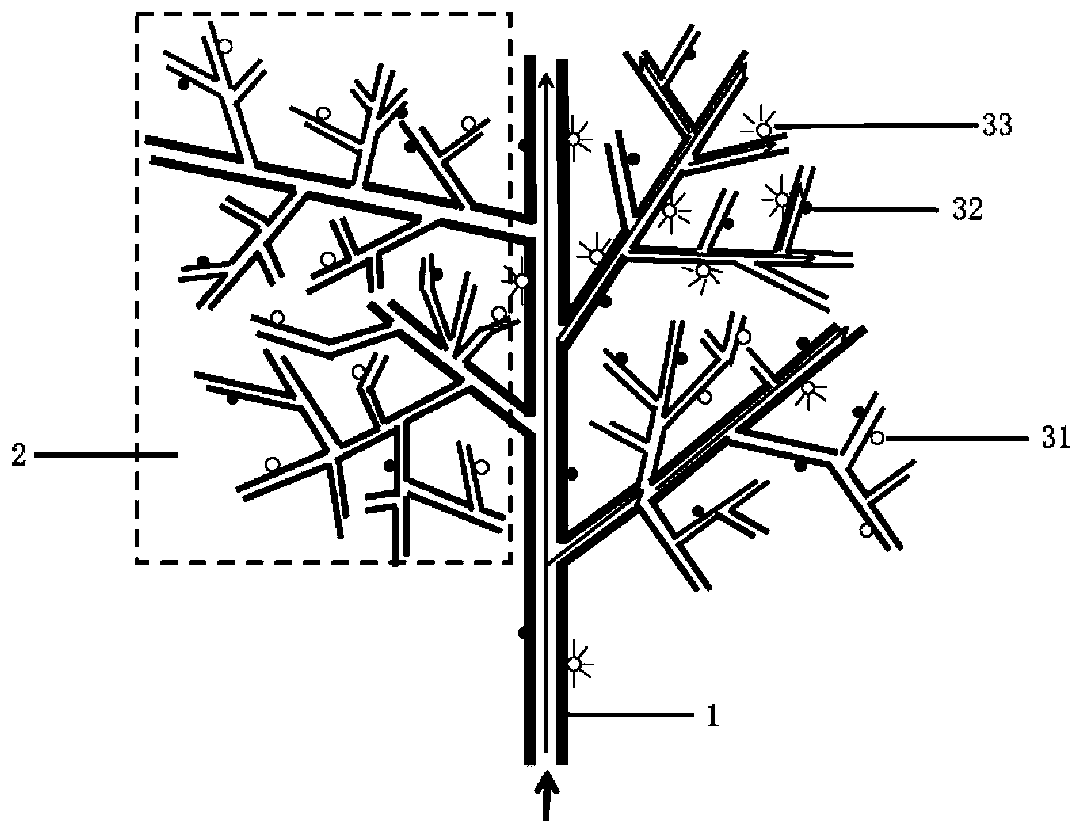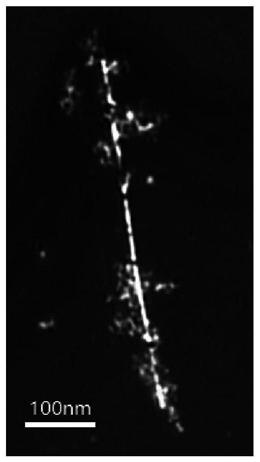Synthesis and optical manipulation of multi-branched plasmonic waveguide composite nanostructures
A composite nanostructure and plasmonic waveguide technology, which is applied in the field of nanomaterials and chemical biology, can solve problems such as crosstalk, and achieve the effects of good repeatability, low loss, and enhanced Raman scattering
- Summary
- Abstract
- Description
- Claims
- Application Information
AI Technical Summary
Problems solved by technology
Method used
Image
Examples
Embodiment
[0041] 1. Prepare an ethylene glycol solution of 0.1M silver nitrate, 0.2M sodium chloride, and 0.6M PVP, and fully react the mixed solution at 160°C for 2 hours.
[0042] 2. Take 10ml of the mixed solution, add 0.5ml of acetone, and stir well.
[0043] Add 5ml sodium citrate (0.5M), 0.5ml L-arginine (0.05M), 0.15ml PVP (0.5M), 0.2ml silver nitrate (0.5M) to 3.7ml deionized water. After the solution was evenly stirred, 2ml of sodium borohydride (0.4M) was slowly added dropwise, and the solution was continuously stirred for 20 min under the condition of avoiding light.
[0044] 4. Take 7ml of the solution prepared in step 3 and mix it into the solution prepared in step 1. The mixed solution is placed under white light LED and irradiated for 2 hours to obtain a dendritic nanostructure solution.
[0045] 5. Heat the mixed solution of 0.2mmol chromium oxide, 0.8mmol stearic acid and 2g ODE to 200°C. After the solution is cooled to room temperature, add 1.5g ODA and 0.5g TOPO, and...
PUM
 Login to View More
Login to View More Abstract
Description
Claims
Application Information
 Login to View More
Login to View More - R&D
- Intellectual Property
- Life Sciences
- Materials
- Tech Scout
- Unparalleled Data Quality
- Higher Quality Content
- 60% Fewer Hallucinations
Browse by: Latest US Patents, China's latest patents, Technical Efficacy Thesaurus, Application Domain, Technology Topic, Popular Technical Reports.
© 2025 PatSnap. All rights reserved.Legal|Privacy policy|Modern Slavery Act Transparency Statement|Sitemap|About US| Contact US: help@patsnap.com



